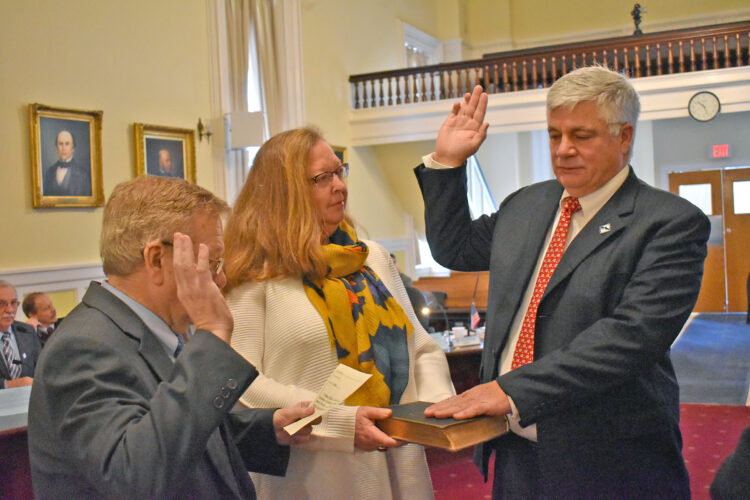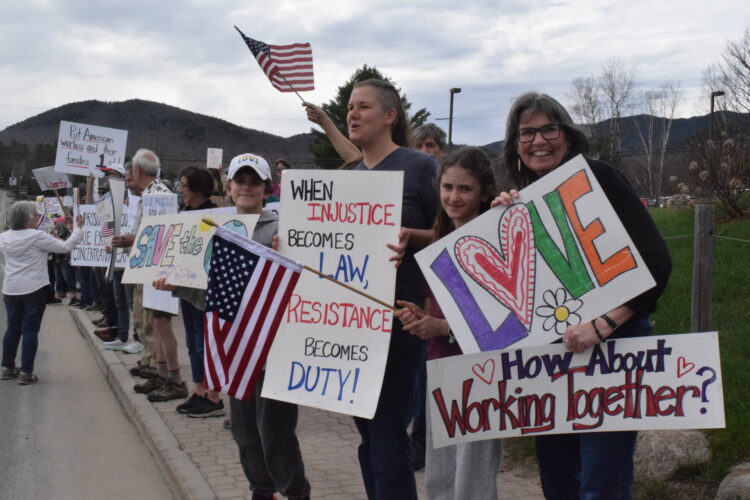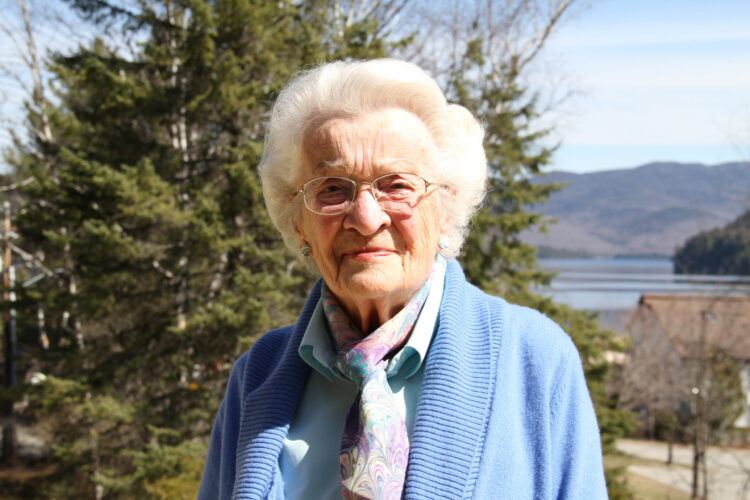Tour to visit Placid’s oldest church
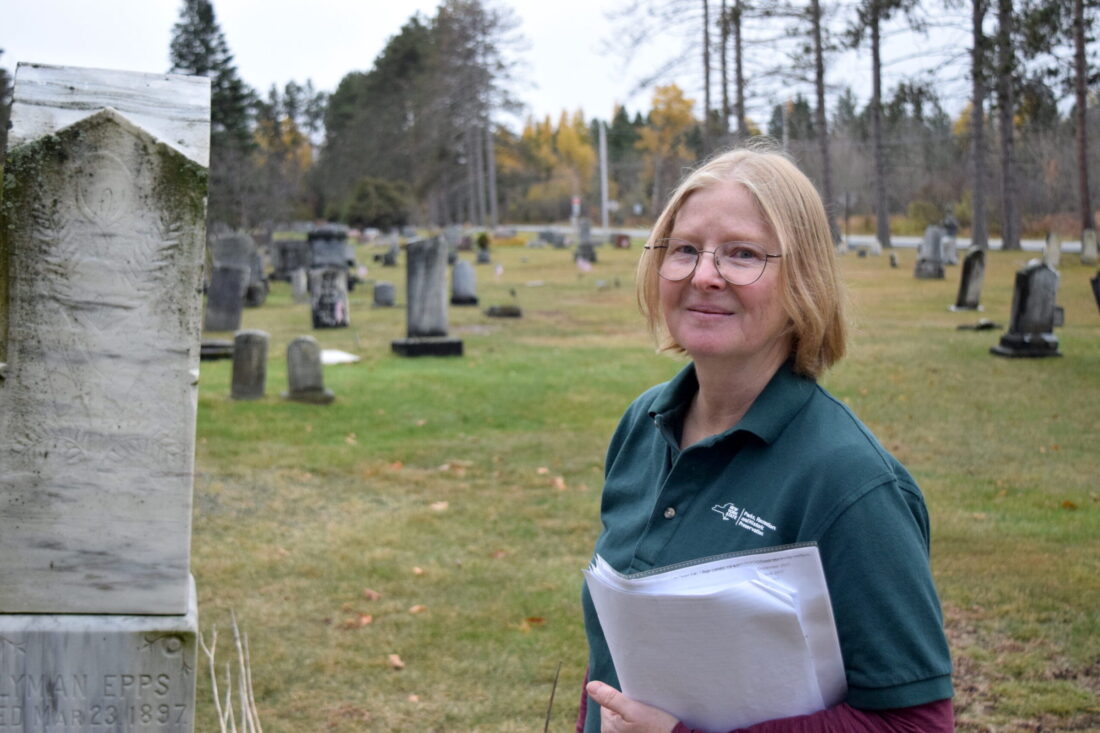
Cheryl Craft smiles in October 2022 in the North Elba Cemetery near the grave of Lyman Epps Sr., one of the first Black settlers and lifelong residents of North Elba. (News photo — Lauren Yates )
LAKE PLACID — John Brown Farm State Historic Site in Lake Placid will cap off its summer hike through history series on Aug. 1 with a visit to the village’s oldest standing church.
The event begins at 10 a.m., with participants asked to meet at the John Brown Farm State Historic Site, located at 115 John Brown Road. From there, the group will drive together to the North Elba Cemetery, walking from there. The hike is scheduled to conclude at 11:30 a.m.
In addition to walking to the church, the guided history walk will go through the Old Section of the North Elba Cemetery, with a discussion on some of the local settlers from the John Brown era who are buried there.
Built in 1875, the North Elba Union Church, commonly known as the “Old White Church” is now privately owned and no longer offers regular services. Despite this, the history behind — and inside — it is an integral part of the North Elba and Lake Placid’s history, according to state Office of Parks, Recreation and Historic Preservation Historical Interpreter Cheryl Craft.
“It’s the first (formal) church in the community,” Craft said. “People had religious meetings before it was built, but there wasn’t a structure just for that.”
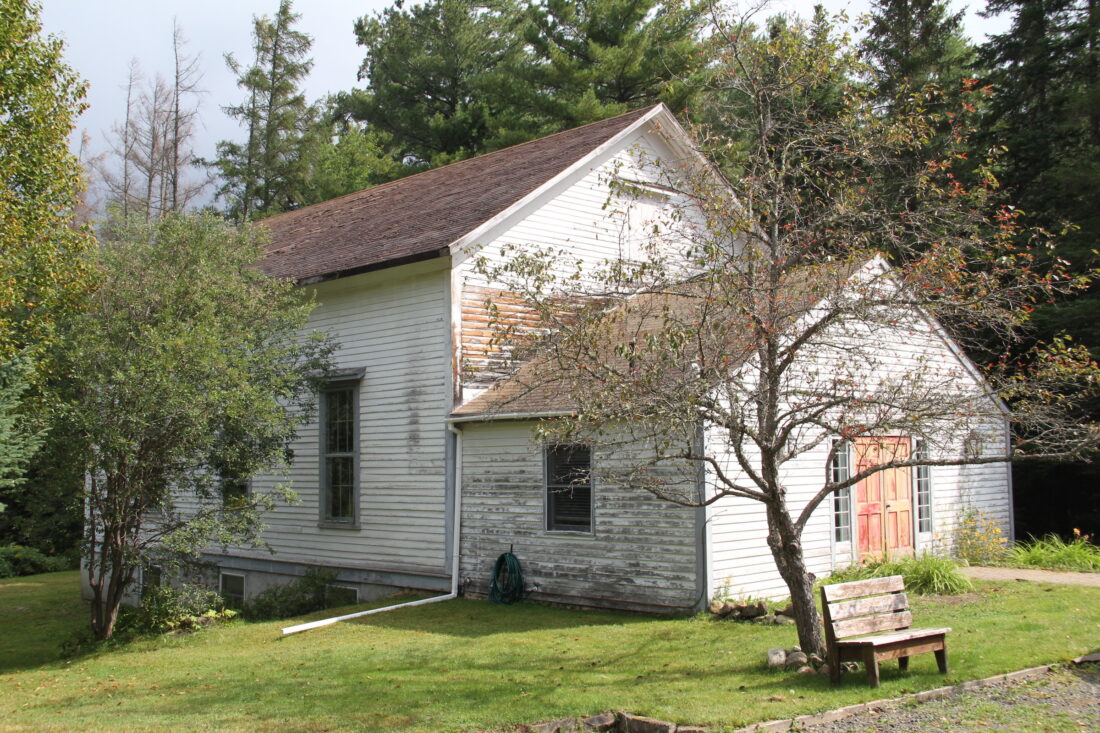
Lake Placid’s historic “White Church” is seen in 2017. (News photo — Andy Flynn)
On Aug. 1, members of the public will have a rare chance to tour the church’s interior. Craft, who recently visited the church and met with its owners to start putting her interpretive presentation together ahead of the hike said that although it’s not an especially grand structure, it was exciting to check out a historical space that she had never been in before.
The church was built for joint use by Methodist and Baptist congregations in the 1870s. One of its co-founders was Lyman Epps, Sr., a Black settler who, along with his family, played a formative role in the area’s development.
The Epps were one of the Black families to move to Timbuctoo, a mid-1800s farming community in North Elba that has since reforested. In its heyday, about 50 Black families moved to the land, which was offered to them by Gerrit Smith, a wealthy abolitionist. Smith believed it would offer Black families a way to economic sustainability, while ensuring their right to vote.
At the time, New York’s state constitution required Blacks to own at least $250 of real property to vote, a rule that did not apply to whites. This stood until 1874, and was eventually nullified by the 15th Amendment to the U.S. Constitution.
Timbuctoo, however, did not work out as planned. The land was unproductive and the growing season was fleeting. Most families eventually gave up and moved away. Epps, however, managed to make a living there, largely by herding sheep, which the rugged land and cold climate were more hospitable to.
Epps, in addition to his involvement with the Old White Church, was a community leader. He worked as a music teacher, helped to found the Lake Placid Public Library and the Lake Placid Baptist Church as the Baptist and Methodist congregations eventually constructed their own dedicated structures about a decade after the Old White Church was built.
Craft said an important aspect of her job as an interpreter is to draw connections between historical figures, like Epps, to people and places, such as the library, that are vibrant components of today’s community.
“This John Brown story — it’s not as far in the past as people would expect, or that they would feel at first,” she said. “If I can tie events from that period and people from that period to places and people in the present, it kind of just lends a different perspective to the history.”
The hike itself, Craft said, is less than a mile, and is more of a stroll. While some of her summer hikes cover greater distances or more rugged terrain, she said this event was more casual — and accessible. It’s free and open to the public, with Craft emphasizing that both visitors and residents will find the historical information interesting and impactful.
“My hikes are geared toward people who might be visiting the area and people who are residents, who might want to find out more about their own past story,” she said.
While the hike is free, Craft said people need to sign up in advance. This is so that she and the church’s owners know how many people to expect, as well as to make sure nobody gets left behind when the hike begins. Call or text Craft at 518-806-9719 to register for the hike.
People with any questions about the event can reach out to that number as well. The deadline to register is 4 p.m. on July 31.
Craft noted that while this is the last of the summer hike series, there will be another round in the fall. She’s still in the planning process for those, and encouraged anyone with a possible local site that is somehow related to the John Brown era or legacy to reach out to her about creating a hike there.
Craft also invited anyone who has a relative buried at the cemetery to come on the hike and, if they would like, to share a bit about that person and their story with the group.
“I certainly encourage local people to come,” she said. “If there are people from the neighborhood who have relatives who are buried in the North Elba Cemetery, I’d certainly be happy for them to share a bit about those people,” she said.
For more information on the John Brown Farm State Historic Site, visit tinyurl.com/mrychmc7.

